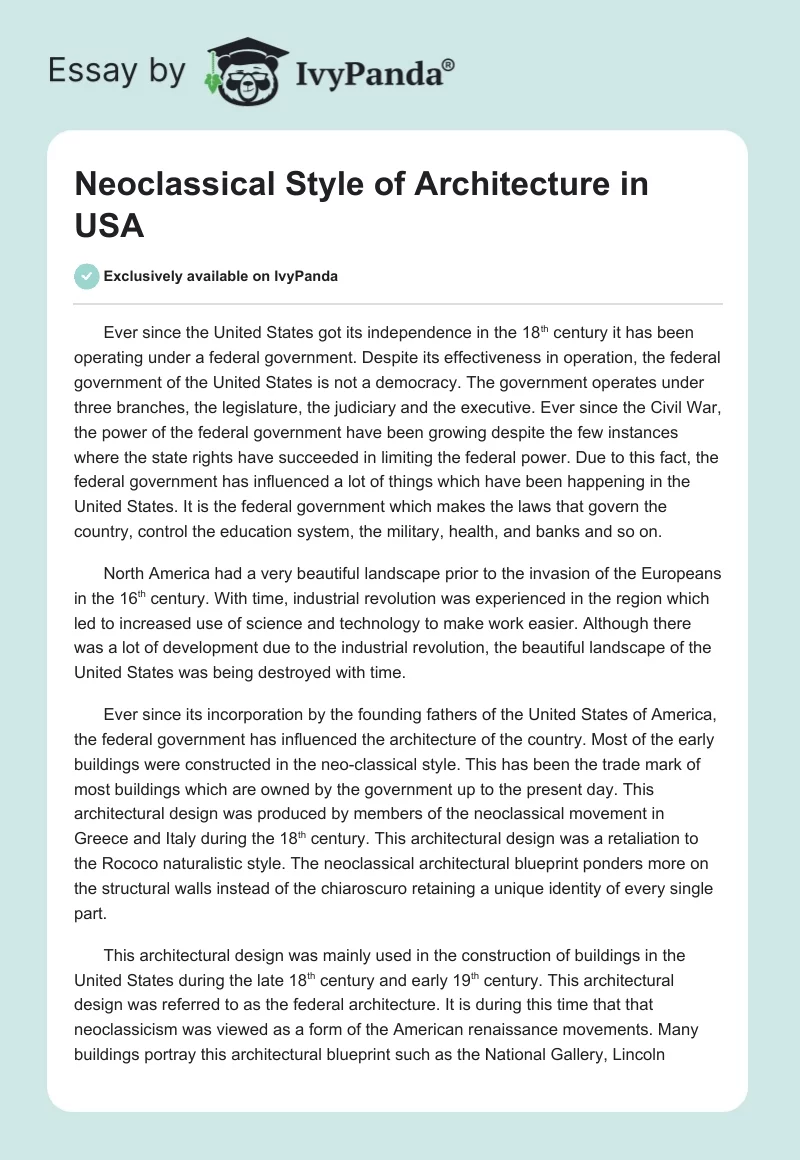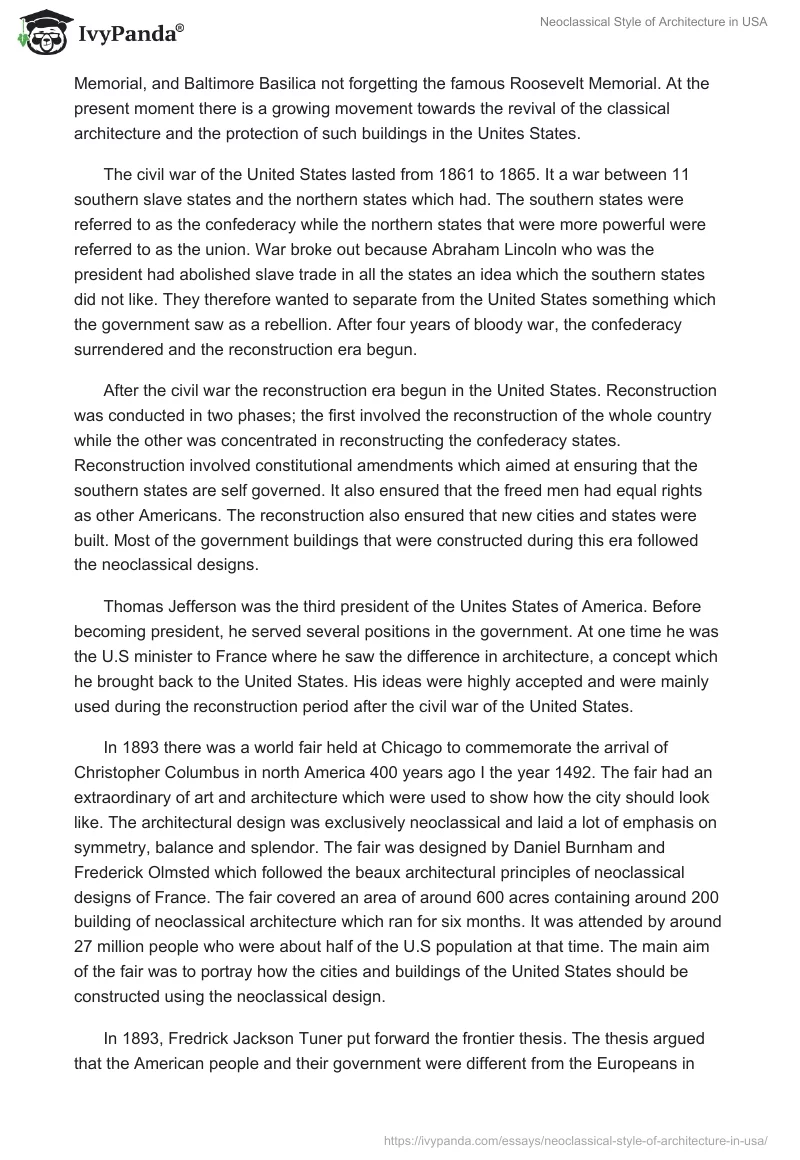Ever since the United States got its independence in the 18th century it has been operating under a federal government. Despite its effectiveness in operation, the federal government of the United States is not a democracy. The government operates under three branches, the legislature, the judiciary and the executive. Ever since the Civil War, the power of the federal government have been growing despite the few instances where the state rights have succeeded in limiting the federal power. Due to this fact, the federal government has influenced a lot of things which have been happening in the United States. It is the federal government which makes the laws that govern the country, control the education system, the military, health, and banks and so on.
North America had a very beautiful landscape prior to the invasion of the Europeans in the 16th century. With time, industrial revolution was experienced in the region which led to increased use of science and technology to make work easier. Although there was a lot of development due to the industrial revolution, the beautiful landscape of the United States was being destroyed with time.
Ever since its incorporation by the founding fathers of the United States of America, the federal government has influenced the architecture of the country. Most of the early buildings were constructed in the neo-classical style. This has been the trade mark of most buildings which are owned by the government up to the present day. This architectural design was produced by members of the neoclassical movement in Greece and Italy during the 18th century. This architectural design was a retaliation to the Rococo naturalistic style. The neoclassical architectural blueprint ponders more on the structural walls instead of the chiaroscuro retaining a unique identity of every single part.
This architectural design was mainly used in the construction of buildings in the United States during the late 18th century and early 19th century. This architectural design was referred to as the federal architecture. It is during this time that that neoclassicism was viewed as a form of the American renaissance movements. Many buildings portray this architectural blueprint such as the National Gallery, Lincoln Memorial, and Baltimore Basilica not forgetting the famous Roosevelt Memorial. At the present moment there is a growing movement towards the revival of the classical architecture and the protection of such buildings in the Unites States.
The civil war of the United States lasted from 1861 to 1865. It a war between 11 southern slave states and the northern states which had. The southern states were referred to as the confederacy while the northern states that were more powerful were referred to as the union. War broke out because Abraham Lincoln who was the president had abolished slave trade in all the states an idea which the southern states did not like. They therefore wanted to separate from the United States something which the government saw as a rebellion. After four years of bloody war, the confederacy surrendered and the reconstruction era begun.
After the civil war the reconstruction era begun in the United States. Reconstruction was conducted in two phases; the first involved the reconstruction of the whole country while the other was concentrated in reconstructing the confederacy states. Reconstruction involved constitutional amendments which aimed at ensuring that the southern states are self governed. It also ensured that the freed men had equal rights as other Americans. The reconstruction also ensured that new cities and states were built. Most of the government buildings that were constructed during this era followed the neoclassical designs.
Thomas Jefferson was the third president of the Unites States of America. Before becoming president, he served several positions in the government. At one time he was the U.S minister to France where he saw the difference in architecture, a concept which he brought back to the United States. His ideas were highly accepted and were mainly used during the reconstruction period after the civil war of the United States.
In 1893 there was a world fair held at Chicago to commemorate the arrival of Christopher Columbus in north America 400 years ago I the year 1492. The fair had an extraordinary of art and architecture which were used to show how the city should look like. The architectural design was exclusively neoclassical and laid a lot of emphasis on symmetry, balance and splendor. The fair was designed by Daniel Burnham and Frederick Olmsted which followed the beaux architectural principles of neoclassical designs of France. The fair covered an area of around 600 acres containing around 200 building of neoclassical architecture which ran for six months. It was attended by around 27 million people who were about half of the U.S population at that time. The main aim of the fair was to portray how the cities and buildings of the United States should be constructed using the neoclassical design.
In 1893, Fredrick Jackson Tuner put forward the frontier thesis. The thesis argued that the American people and their government were different from the Europeans in that they are democratic, innovative, egalitarian and aggressive in character. This brought about the American frontier experience. In his theory turner felt that the united states need to expand overseas so as to spread republicanism instead of embracing territorial conquest and subordination of the native Americans.


